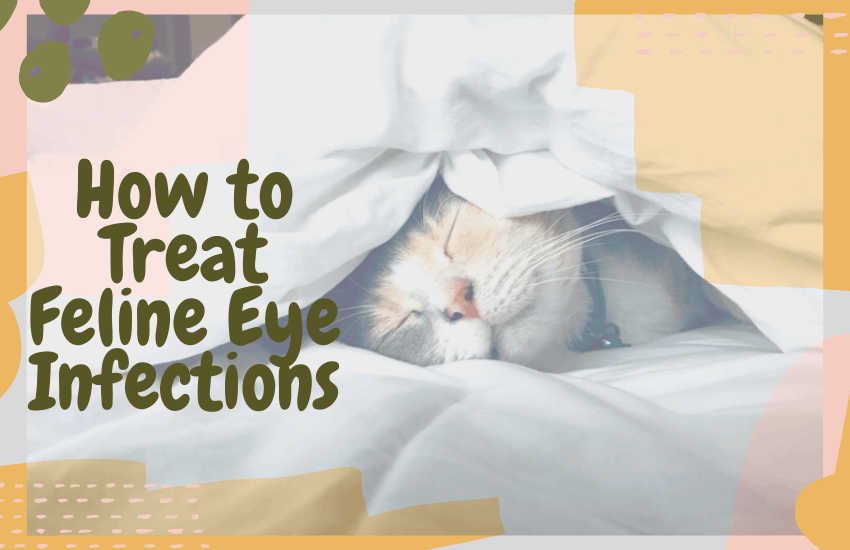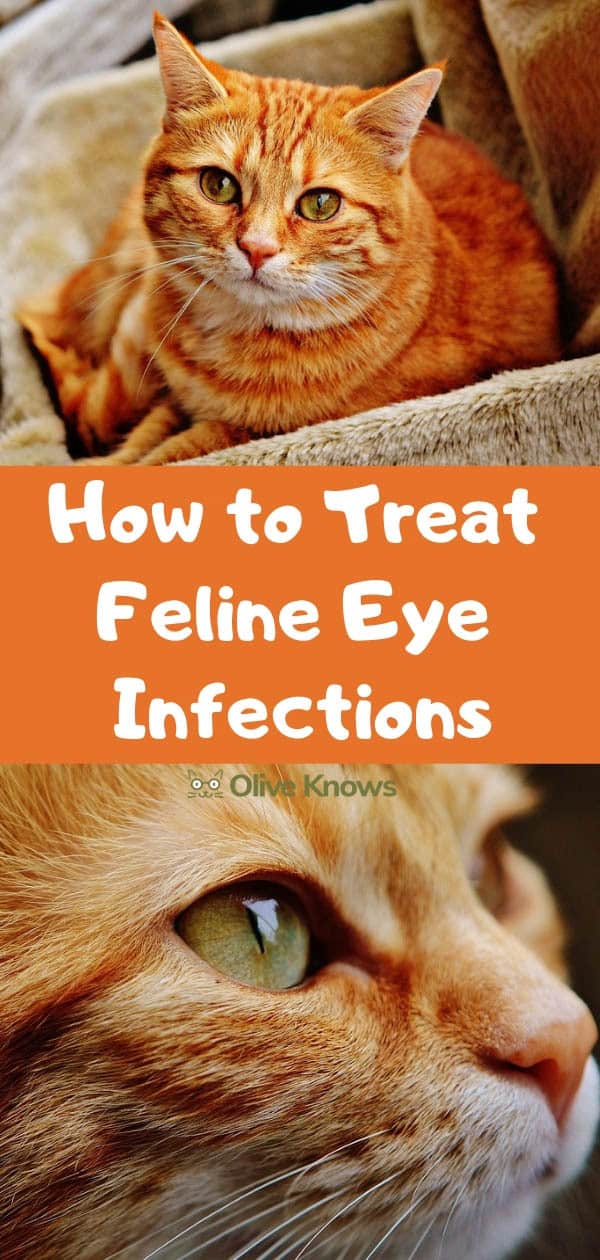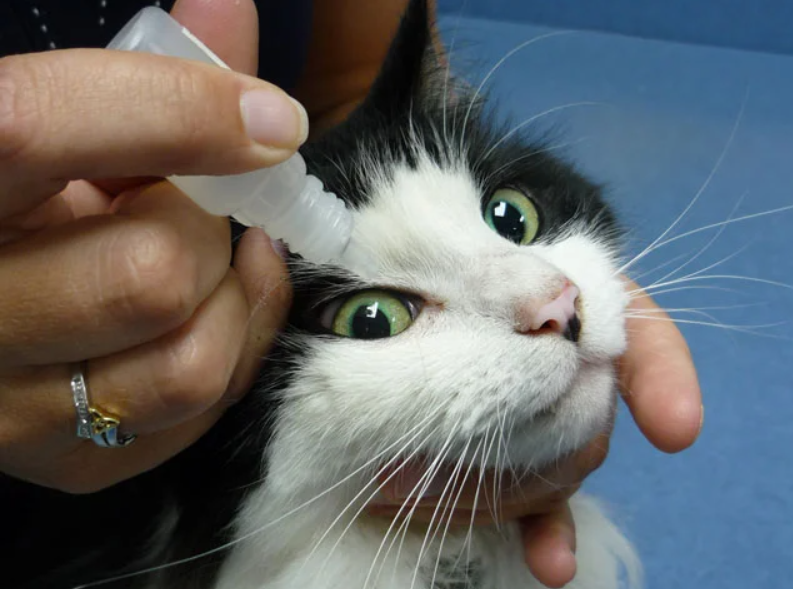
The health of our feline friends is one of the most important aspects of being a cat parent. While ensuring our cats get their regularly scheduled checkups is a step in the right direction, preventing illnesses doesn’t stop there. In fact, with a little vigilance cat parents can catch or even prevent certain illnesses from occurring.
One such illness is feline eye infections. They happen for a variety of reasons but are more common in kittens than they are in adult cats due to an underdeveloped immune system. If left untreated, eye infections can cause visual impairments and even blindness, so it is vital cat parents understand the causes, symptoms and treatment process of eye infections.
Table of Contents
Feline Eye Infections
Eye problems are not as common in cats as they are in other animals, such as dogs, but when they do occur it’s usually a case of Conjunctivitis. Also known as pink eye, Conjunctivitis can affect cats just as well as humans and causes red or swollen eyes. It is usually accompanied by ocular discharge that can become crusty and “glue” the eye shut. Conjunctivitis can be both noninfectious or infectious.

Causes of Noninfectious Conjunctivitis
In noninfectious cases, physical characteristics can play a large part in whether or not a cat will experience pink eye. Certain breeds are more prone to eye infections than others due to the anatomy of their eyes.
For instance, long-haired breeds such as Persians and Himalayans have eyelids that turn inward. This condition, called entropion, causes their eyelashes to continually rub against their eyeballs. Naturally, the rubbing can lead to the cornea become irritated and inflamed, resulting in an infection.
Environmental factors can also cause eye infections. Exposure to chemicals such as those found in cleaning supplies can cause a secondary infection of the eye or eyes. Likewise, foreign bodies like dust, dirt, or even kitty litter can become trapped in the eye. Finally, allergies can cause eye infections as well.
Causes of Infectious Conjunctivitis
Infectious Conjunctivitis is caused by bacteria, viruses or even fungi. Underlying medical conditions can cause infectious conjunctivitis in cats, too, especially in cats with existing respiratory conditions such as that caused by the feline herpesvirus. Other conditions include chlamydiosis and a mycoplasma infection.
Feline herpesvirus – The feline herpesvirus (FHV-1) is much different than the herpes virus that affects humans. Instead, this virus results in feline viral rhinotracheitis (FVR-1) which causes upper respiratory infections in the nose and throats of cats. FVR-1 is very comparable to a head cold because it causes sneezing, watery eyes, and nasal discharge.
Chlamydiosis – Chlamydiosis is an upper respiratory condition caused by the chlamydia psittaci bacterium. It’s most often present in cats that have been kept in tight quarters with other cats and has a high risk of spreading. In addition to causing the traditional symptoms of a respiratory condition, Chlamydiosis also affects a cat’s gastrointestinal and reproductive systems.
Mycoplasma Infection – A mycoplasma infection is the result of a bacteria that acts as a parasite within the bloodstream. This bacteria can cause anemia and has symptoms similar to those of an upper respiratory illness. Mycoplasma infections are known to cause infections in other parts of the body, including the eyes.
Symptoms of a Feline Eye Infection
If your cat is suffering from an eye infection, many of the symptoms will be fairly easy to recognize. Common symptoms of eye infections include:
- Discharge
- Watering
- Crusty spots around the inner corners
- Cloudiness or a change in color
- Tear-stained fur
- Trouble opening one or both eyes
Her behavior can also be an indicator of an eye infection or irritation of the eye. If she is pawing at her eyes or appears to be squinting, it could be a sign there is something wrong. If you suspect she may have an eye infection, it is best to contact your vet immediately to get to the bottom of it.
Diagnosis and Treatment of Feline Eye Infections
Though most eye infections tend to go away on their own, there’s a good chance the vet will ask you to bring your cat into the clinic, especially if your cat is prone to eye infections. While there, the vet may ask a series of questions such as:
- Has she been diagnosed with a medical condition known to cause eye infections?
- How long has she had symptoms of an eye infection?
- Are you aware of any trauma to the eye?
- Has your cat been exposed to any chemicals or irritants such as cleaning supplies?
- Has she been exposed to any other cats with similar symptoms?
After hearing your answers and checking the eye for foreign bodies, the vet may decide to run some tests to see if there is an underlying issue such as the feline herpesvirus, chlamydiosis, or a mycoplasma infection mentioned above. Common tests include testing the level of pressure in the eyes, measuring tear production, blood tests, looking for corneal ulcers using fluorescein dye, or taking a scraping of the conjunctival tissue. Once the vet has a clear picture of the cause of the eye infection, a treatment plan can be developed.
Treating a Noninfections Eye Infection

The treatment plan for a noninfections eye infection is very straightforward. Since it is not caused by a bacteria or virus, no antibiotics are necessary. Instead, the vet will prescribe a simple treatment plan using a topical corticosteroid in the form of eye drops or an ointment. If the infection was caused by an allergy, the vet may also prescribe a medication to reduce or stop her allergic reactions.
Treating an Infectious Eye Infection
The treatment plan for an infectious eye infection is more complicated depending on the cause of the infection. In most cases, the vet will prescribe a broad-spectrum antibiotic to fight off whatever bacteria, fungi, or virus is present. The treatment plan also includes anti inflammatory drugs to reduce the swelling and irritation in the eye, which usually comes in the form of an ointment or eye drops.
In the case of an eye infection caused by the feline herpesvirus, treatment can vary. If the infection is mild, most vets will advise to let the infection run its course. However, if bacteria is present they will prescribe an antibiotic. Cat parents will know bacteria is present if they notice a change in the color of discharge from the eyes or nose. Immune stimulants such as L-lysine or Interferon-alpha may also be prescribed to promote healing in cats that experience recurring problems.
If the cause of the eye infection is from chlamydiosis, the treatment plan will consist of a combination of drugs. The first will be tetracycline ophthalmic ointment in the form of an eye drop or an ointment, which will be applied directly to the conjunctival tissue of the eye. The next will be the oral antibiotic, azithromycin, to eradicate the chlamydia psittaci bacterium.
Administering the Medication
Giving a cat medication can be a challenging task, especially when treating a sensitive area like the eye. For the first few days, treatment might be a two person job in which one person holds the cat while the other administers the dose of medication. If two people aren’t an option, vets also recommend wrapping your cat in a blanket, similar to swaddling a baby. This will help to keep her still and keep her from scratching you. For oral medications such as antibiotics, many cat parents find success in hiding the pill inside of treat like Greenies Pill Pockets.
Regardless of how you give her the medication, it’s important to always wash your hands before and after, as well as follow the directions for each medication. Never skip a dose or stop treating the infection early, even if her symptoms seem to have gone away. Failure to finish out the treatment plan can cause the infection to come back and it may be harder to treat the second time around.
Prevention and Screening
In a home with more than one cat, stopping the eye infection from spreading is just as important. If the infection is caused by a bacteria and your cat is contagious, do your best to keep her away from the other cats in the household while she is still contagious. This may mean separating the cats in different rooms until she starts to see some relief from her medication.
The bacteria that causes conjunctivitis is easily transmitted through touch as well as on food and water bowls and litter boxes, so be sure to clean each one thoroughly to prevent the spread of the infection. You could even go as far as to disinfect the house using Clorox wipes, as humans can also be carriers of the bacteria.
Knowing the signs of an eye infection will go a long way in detecting it early on. With a little diligence, eye infections can be caught fairly early on. Experts recommend getting into the habit of examining your cat’s eyes before grooming her. The check-up only takes a few minutes and once a cat parent becomes accustomed to doing it, the whole process will become a breeze.
Simply look directly into her eyes to verify they’re clear and bright, and both of her pupils are the same size. Take note of any watery discharge or crustiness around her eyes, as well. Next, gently roll down her lower eyelid to make sure the inner lid is a healthy pink color rather than red or white.
Knowing your cat is sick or in pain is a terrible feeling but the good news about eye infections is how quickly you and your kitty will see relief. With the proper treatment, symptoms will start to disappear within just a few days.


Leave a Reply